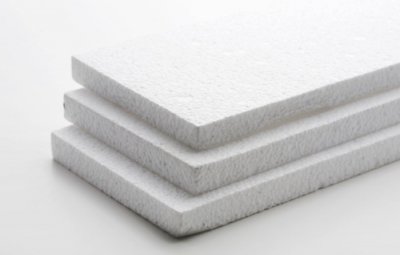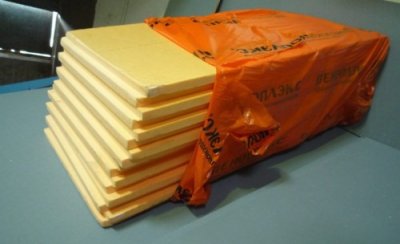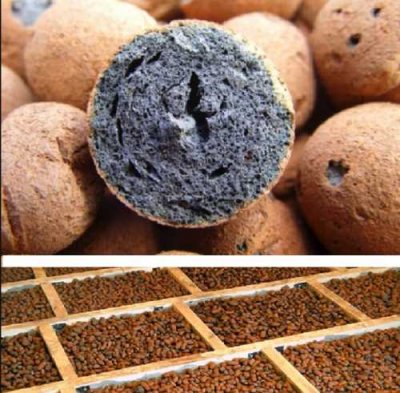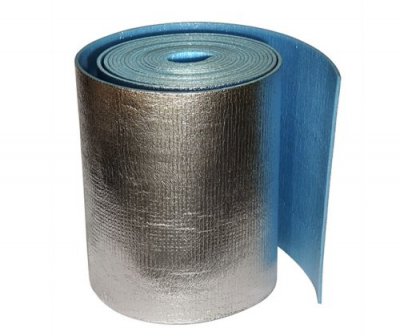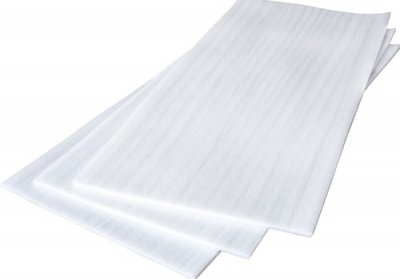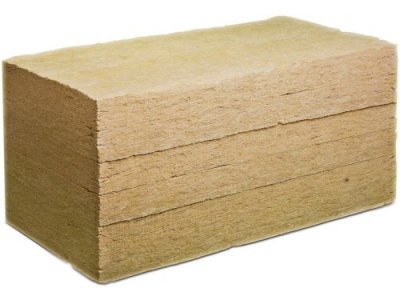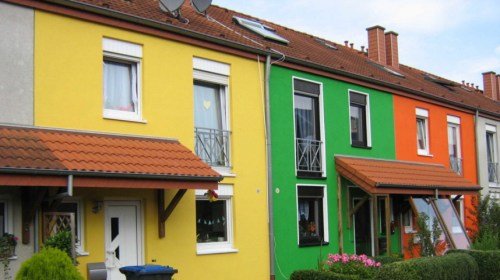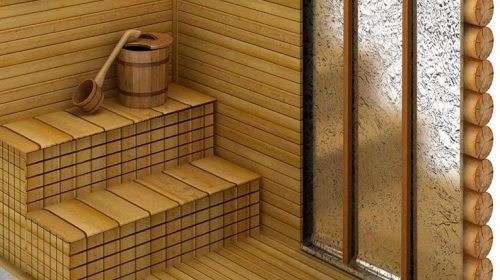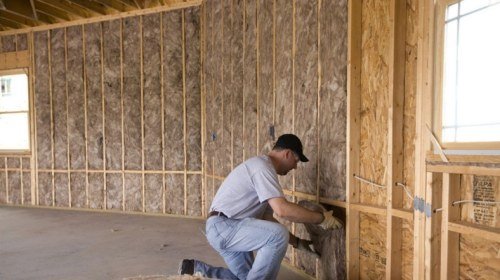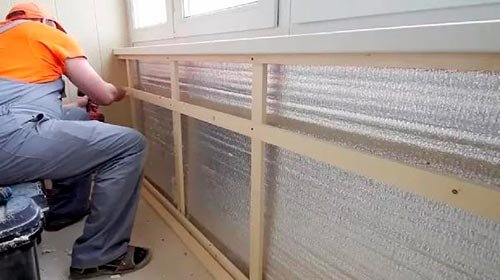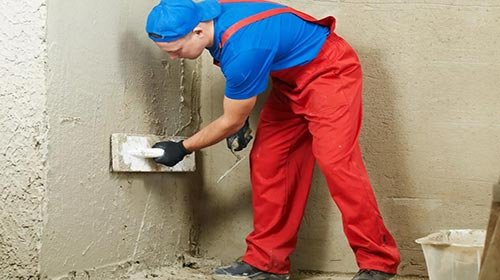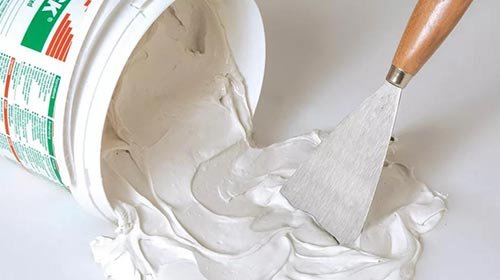A place |
Name |
Feature Rating |
| 1 | Stone wool | Universal heat insulator |
| 2 | Jute | The best insulation for mezhventsovyh joints |
| 3 | Ecowool | Safety and environmental friendliness |
| 4 | Izolon | The most modern heat insulator |
| 5 | Glass wool | Elasticity and strength |
| 6 | Penofol | The thinnest internal insulation |
| 7 | Slag wool | Accessibility and resistance to biodegradation |
| 8 | Expanded clay | Heat insulator for concrete foundations |
| 9 | Penoplex | Maximum efficiency |
| 10 | Styrofoam | Accessibility and ease |
In order to create a microclimate in a wooden house that is ideal for the life of a modern person, it is necessary to correctly perform thermal insulation. Depending on the design of the ceiling, walls and floor insulation is selected with a certain set of technical parameters. Experts advise to pay attention to such qualities of a heat insulator as:
- thermal conductivity coefficient (the lower, the better);
- weight (the lower the better);
- the possibility of further finishing;
- combustibility;
- environmental friendliness;
- vapor permeability;
- environmental friendliness;
- durability;
- cost
Considering these important material properties, we selected the top 10 insulation for a wooden house.
Top 10 best insulation for a wooden house
10 Styrofoam
 Accessibility and ease
Accessibility and ease
Average price: 150 rub. (1 sq. M)
Rating (2019): 4.5
There is a place in the wooden house as a heater and popular foam. For example, the availability and ease of material makes it one of the best heat insulators for the ceiling from the inside. The foam is easy to install, it is cut with a stationery knife, and fixed with glue, nails, screws. The plates are laid end to end, and the gaps and voids are filled with building foam. The material has excellent steam and water repellency. Attracts homeowners and such a valuable property of foam plastic as environmental friendliness. Thermal insulation can be applied a variety of finishing coatings.
The main disadvantage of foam is flammable. Therefore, it is not suitable for thermal insulation of boiler rooms or chimneys. Unfortunately, not only humans, but also rodents like insulation. Therefore, it will be useful to protect the foam with a fine metal mesh.
9 Penoplex
 Maximum efficiency
Maximum efficiency
Average price: 505 rub. (1 sq. M)
Rating (2019): 4.6
Penoplex like foam is made of polystyrene foam, but the manufacturing techniques, like properties, are seriously different. Warming of a wooden house penoplex is the most effective option. Even in the northern regions of the country, this material is used as a heat insulator. The advantages of a synthetic heat insulator experts include high strength, the ability to apply plaster and paint. This expands the horizon of the finishing work. The undoubted advantage of Penoplex will be the low weight, ease of installation, as well as the long service life of the insulation.
But specialists have an ambiguous attitude towards low vapor permeability. The breathing capacity of a wooden house deteriorates, so you have to take care of the ventilation system. The disadvantages are the high price and the flammability of the material (class G4).
8 Expanded clay
 Heat insulator for concrete foundations
Heat insulator for concrete foundations
Average price: 4 rub. (1l)
Rating (2019): 4.6
When concrete bases (floor, ceiling) are used in a wooden house, it is possible to perform insulation cheaply and effectively with the help of expanded clay. This material is a small pebbles of a certain size (10-20 mm). Previously, a lathing is made on a concrete base (in the case of a plank floor), hydro or vapor insulation is laid down, and then expanded clay with a thickness of at least 20 mm breaks down in a uniform layer. Calculate the required amount of heat insulator is quite simple. For insulation 1 square. m layer of 10 mm will require 16 liters of expanded clay.Also, the heat insulator can be added directly to the concrete when the device screed.
Builders call claydite the best insulation for concrete foundations. But work with the material should be carefully to prevent damage to the pellets. Otherwise, the coefficient of thermal conductivity will increase significantly.
7 Slag wool
 Accessibility and resistance to biodegradation
Accessibility and resistance to biodegradation
Average price: 50 rub. (1 sq. M)
Rating (2019): 4.6
For a long time in Russia, they mastered the production of a cheap heat insulator called slag wool. The main raw material for its manufacture was blast furnace slags. Given the development of metallurgical production in our country, there is enough waste for the production of affordable insulation. To meet on sale slag can be in plates and rolls, and with foil-coated. The material is flexible, which allows high-quality insulation of curved surfaces. The heat insulator keeps heat well in a wooden house, does not allow noise from the street, frightens off rodents and insects.
Users note several significant flaws in slag wool. It absorbs moisture, and when wet, an acidic medium is formed that can destroy metal elements. Workers should use protective equipment, as skin contact causes irritation.
6 Penofol
 The thinnest internal insulation
The thinnest internal insulation
Average price: 21 rub. (1 sq. M)
Rating (2019): 4.7
Penofol is a reflective insulation created on the basis of polyethylene foam. Due to the foil coating, it exhibits a low thermal conductivity even with a small thickness. There are three varieties: penofol-A has one layer of aluminum foil, penofol-B has a two-sided coating, and penofol-C is protected by foil on the one hand, and on the other, has a self-adhesive surface. The material is applied both outside and inside a wooden house. With it, you can warm the ceiling, walls and floor. The presence of self-adhesive layer simplifies the installation of the insulator, and when working with him does not require special clothing or personal protective equipment.
Experts recommend the use of penofol in the integrated insulation of the house. For example, to install penoplex to a wooden bar, and to attach a thin (3 mm) layer of penofol to it. The disadvantage of the insulator is the weak effect of the use of penofol as the only insulation.
5 Glass wool
 Elasticity and strength
Elasticity and strength
Average price: 63 rubles (1 sq. M)
Rating (2019): 4.7
Elastic and durable insulation is glass wool. This material is used for a long time in house building, today, thanks to new technologies, it has received a second life. The basis of insulation becomes molten glass, which add dolomite flour, borax, limestone and other components. Polymer binders are used to connect individual fibers. Due to the longest length of glass fibers (15 ... 50 mm), the material surpasses competitors in such indicators as elasticity and elasticity. The advantages of glass wool experts include vapor permeability, low thermal conductivity, inertness to chemical compounds. Insulation is supplied to the trading network in the form of plates, mats and rolls. Separate modifications are covered with a layer of foil or fiberglass.
The main disadvantage of glass wool is the danger of sharp particles to the respiratory organs of a person, eyes and skin. Therefore, all work must be carried out with the use of personal protective equipment.
4 Izolon
 The most modern heat insulator
The most modern heat insulator
Average price: 65 rub. (1 sq. M)
Rating (2019): 4.8
Isolon heat insulator has universal properties. Experts call it a heater of the 21st century. The effectiveness of the material is complemented by high elasticity and durability. Izolon is a foamed polyethylene, which is sold in the form of rolls, plates and tapes. Some modifications have a foil coating as well as a self-adhesive layer. The strengths of the insulator should include low weight, low thermal conductivity, ease of installation. Of particular note is the zero water absorption of the material.Due to this property, the material retains all its qualities during operation, resists the aggressive effects of the environment.
Izolon can be mounted both outside the wooden house and inside. Insulation does not emit harmful substances even when heated to 100 ° C. Insects and mice do not start there, fungi and mold do not appear.
3 Ecowool
 Safety and environmental friendliness
Safety and environmental friendliness
Average price: 350 rub. (1 sq. M)
Rating (2019): 4.8
Ecowool is considered one of the safest modern heaters. By production of this material waste of paper factories is used. About 80% of the heat insulator is crushed natural cellulose. To make the material resistant to biodegradation, antiseptics and flame retardants are added. Ecowool does not change its thermal insulation qualities when humidity fluctuates. Therefore, condensate will never appear in a wooden house. Protecting the interior from noise and cold, insulation does not emit harmful compounds. This property makes it the best heat insulator for interior use.
The easiest way to work with hypoallergenic plates, although ecowool is sold in bags. But apply loose material is necessary with the help of special equipment. This seriously increases the estimate. Some manage to apply ecowool manually, spending a lot of effort on the tamping layers.
2 Jute
 The best insulation for mezhventsovyh joints
The best insulation for mezhventsovyh joints
Average price: 7 rub. (1m)
Rating (2019): 4.9
Wooden houses from a bar have interbench joints. They become a weak point in wall insulation. Therefore, before proceeding to the finish outside or inside the house, it is necessary to caulk the joints. This is best done at the stage of the erection of a log box. Then after laying each wreath, jute tape is rolled out from above and fixed with staples. The next crown is laid on it, the logs are tightly pressed to the heat insulator along the entire length. In the process of drying wood can form new gaps, so it is important to choose the right thickness of insulation.
When laying ribbon jute, it is important not to break the fibers, the material does not differ in plasticity. The result of improper installation may be the formation of voids between the bar. Otherwise, imported heat insulator surpasses linen tow or traditional moss and becomes the best inter-coat insulator.
1 Stone wool
 Universal heat insulator
Universal heat insulator
Average price: 313 rub. (1 sq. M)
Rating (2019): 4.9
Stone wool becomes an excellent universal heat insulator for a wooden house. It is made by melting rocks such as basalt. Water repellents are added to the stone fibers, as well as urea and formaldehyde resins. The material is most often used for thermal insulation of walls outside, although internal insulation is possible with stone wool. Experts note such strengths of a heat insulator as non-inflammability (600 ° C), high vapor permeability and low thermal conductivity. Manufacturers compact stone fibers into rectangular slabs or mats. Some modifications are additionally equipped with a coating of fiberglass or foil.
Builders call stone wool the best insulation for density and rigidity, the material retains its original shape throughout its life. The heat insulator is not damaged by microorganisms, and during installation does not cause irritation among workers.
